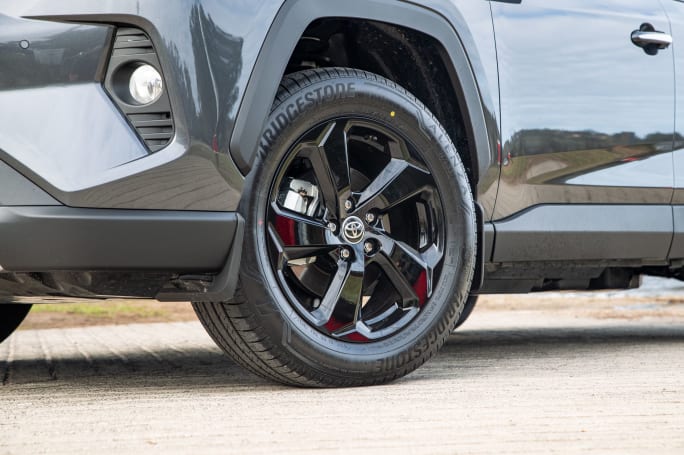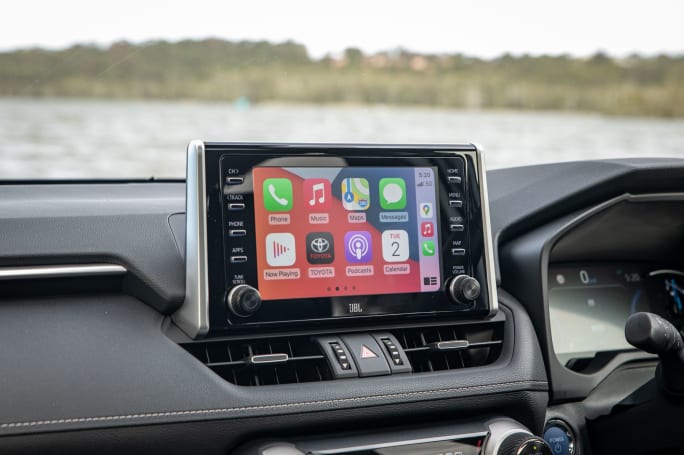We’re looking at one of the most in-demand variants of the RAV4 range, the Cruiser hybrid, which sits below the angrier-looking and non-hybrid Edge AWD but above the mid-grade GXL on the price scale.
Wearing a before on-roads price tag (MSRP) of $46,415, the Cruiser certainly ain’t at the cheap end of the mid-size SUV price scale.
To make things worse, a cursory search on Autotrader reveals people are apparently paying nearly $60K to skip the queue for even a lightly used example, so good luck wrangling a better price from a dealer.

The stock shortfall can hardly be blamed on Toyota, though, which like many other brands this year, is facing multiple issues to do with both COVID-related logistics issues and the seemingly ever-present microprocessor shortage.
Price fluctuations aside, at the stated price the RAV4 Cruiser hybrid goes up against the Hyundai Tucson Elite (turbo-petrol AWD - $43,000), Mazda CX-5 (GT AWD petrol - $47,190), although is perhaps better rivalled in the hybrid space by the Subaru Forester (Hybrid S - $47,190).
As a reminder of how busy this space is, there is also the new-generation Mitsubishi Outlander (which is seven-seat, but the hybrid isn’t here yet) and Kia Sportage (although, no hybrid at launch) to consider.
If you really want to go harder on electrification, there’s always MG’s HS PHEV (Essence - $47,990) to consider.
Standard equipment includes 18-inch gloss black alloys, an 8.0-inch multimedia touchscreen with wired Apple CarPlay and Android Auto support, built in navigation, and digital radio, dual-zone climate control, synthetic leather interior trim with heated front seats and 10-way power adjust for the driver, a 7.0-inch semi-digital dash cluster, wireless phone charging bay, nine-speaker JBL audio system, a panoramic reversing camera, ambient interior lighting, a power tailgate, keyless entry with push-start ignition, and a (non-panoramic) sunroof.

The Cruiser has specific exterior trimmings in chrome to differentiate it from the GXL and Edge, although it's missing some items like a holographic head-up display, and fully digital dash cluster, which is starting to make this high-spec car feel a little dated.
The same goes for the 8.0-inch multimedia screen, which is the same one appearing in the base GX, starting to look tiny in comparison to the 10+ inch screens starting to appear in rival models.
Still, most buyers are drawn in by the promise of Toyota’s silky smooth hybrid drive and trim running costs, which we’ll look at later.
























